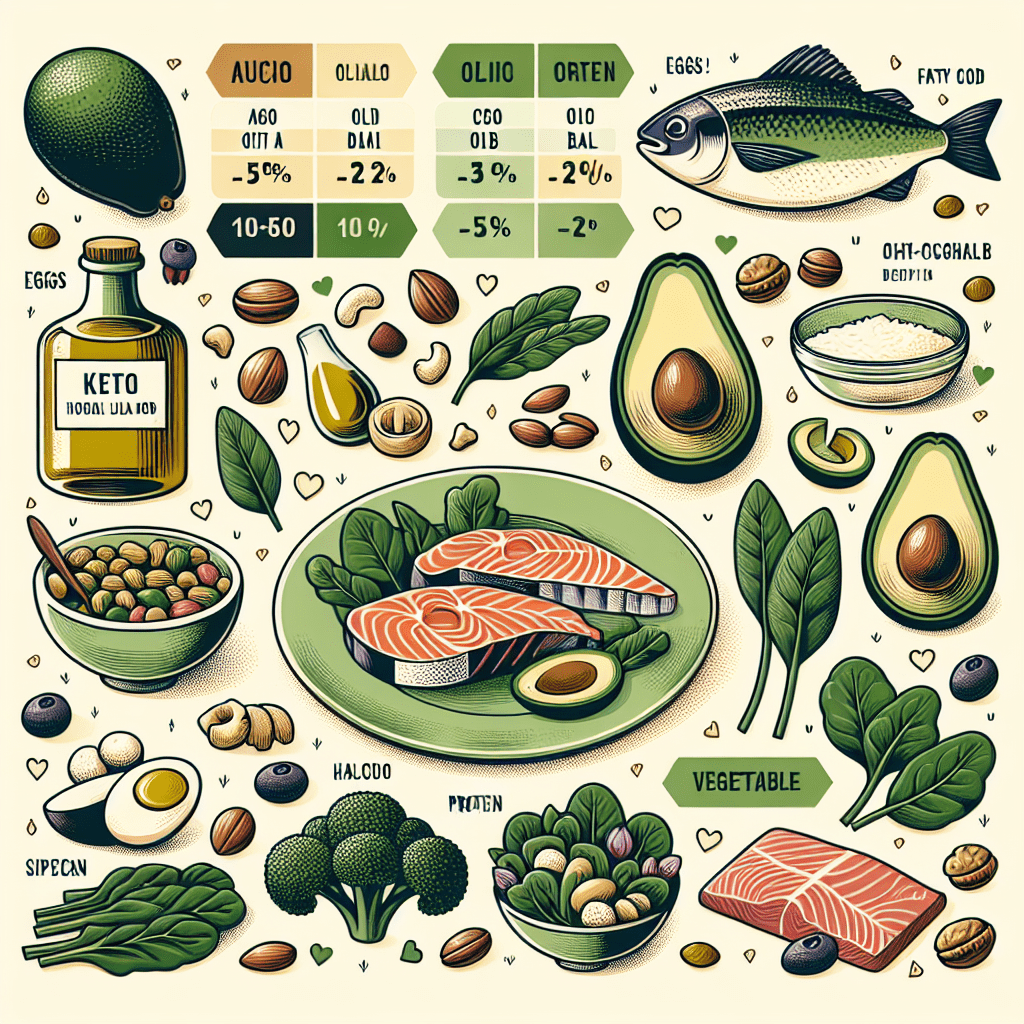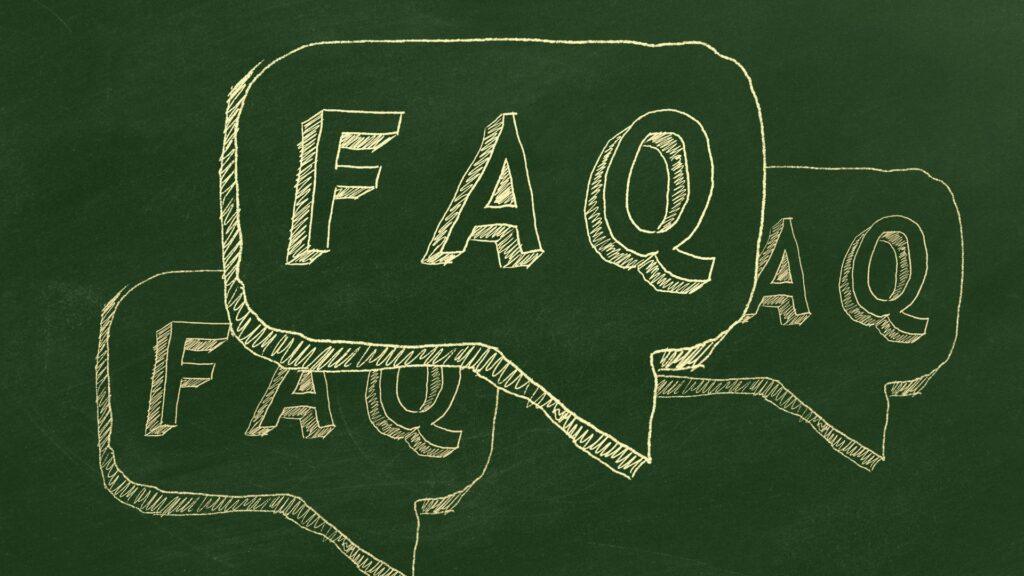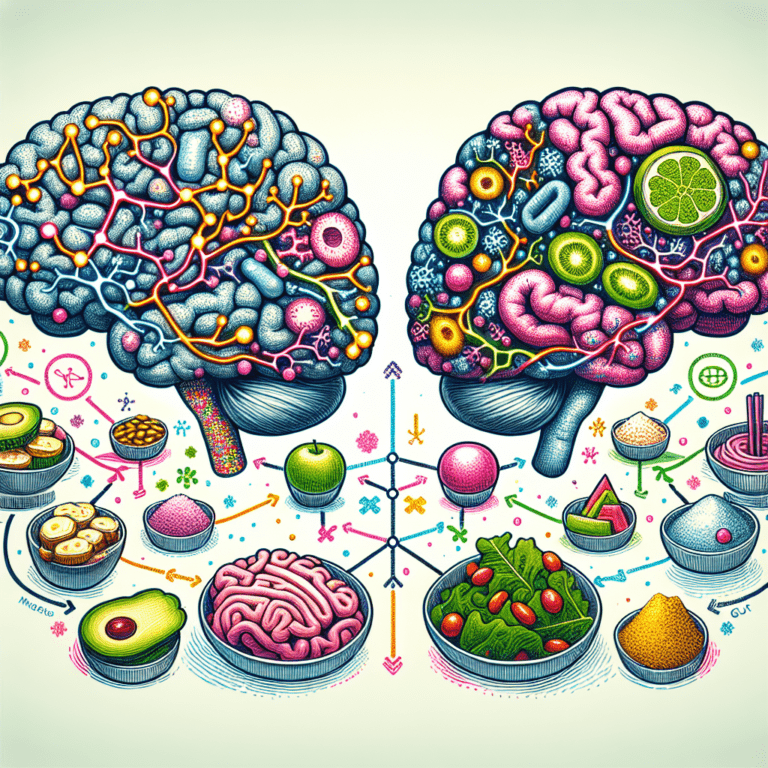What to Eat During Your First Week on Keto

Foods, Meal Plans, and Tips for Success
Starting the ketogenic diet can be both exciting and challenging, especially during the first week. The ketogenic diet, commonly known as keto, is a low-carb, high-fat approach to eating.
It is designed to shift your body into ketosis—a metabolic state where fat becomes the primary source of energy.The first week of keto is critical for this transition and often involves significant dietary changes.
During this initial phase, you may experience symptoms like the “keto flu” (a set of side effects caused by carbohydrate withdrawal) and cravings as your body adjusts.
However, with the right preparation and understanding of what to eat, you can set yourself up for a smoother transition into keto and maximize your success.
Understanding Your First Week on Keto
To successfully begin keto, it’s important to understand the basics of ketosis. Ketosis occurs when you drastically reduce your carbohydrate intake, prompting your body to rely on stored fat for energy instead of glucose.
This metabolic shift takes a few days to achieve and requires discipline in adhering to specific macronutrient ratios.
The general macronutrient breakdown for a keto diet includes 70-80% of calories from fat, 10-20% from protein, and only 5-10% from carbohydrates.
Sticking to these ratios is crucial, particularly in the first week, to trigger ketosis and avoid setbacks. This means your food choices will need to focus on low-carb, nutrient-dense options that align with keto principles.
Foods to Eat During Your First Week on Keto
The success of your first week on keto relies heavily on the foods you consume. Focus on high-quality fats, proteins, and low-carb vegetables for your daily meals. Below are some keto-friendly food options to help you create delicious and satisfying meals while staying compliant.
Healthy Fats
Healthy fats are the cornerstone of the ketogenic diet and should make up the majority of your calories. Incorporate foods such as:
- Avocados and avocado oil
- Olive oil and olives
- Coconut oil and MCT oil
- Nuts and seeds (e.g., almonds, walnuts, chia seeds)
- Butter and ghee
These fats are not only keto-friendly but also provide essential nutrients that support your energy levels and overall well-being.
Protein Options
Protein should be consumed in moderation—too much can interfere with ketosis. Choose high-quality protein sources such as:
- Eggs (a keto staple rich in fat and protein)
- Chicken, turkey, and other poultry
- Fatty fish like salmon, tuna, and mackerel
- Beef, pork, and lamb
- Shellfish like shrimp, crab, and lobster
These options provide adequate protein while ensuring that fat remains the dominant macronutrient in your diet.
Low-Carb Vegetables
Vegetables are an important part of keto, as they provide fiber, vitamins, and minerals. Stick to low-carb, non-starchy vegetables, including:
- Leafy greens (e.g., spinach, kale, lettuce)
- Cruciferous vegetables (e.g., broccoli, cauliflower, Brussels sprouts)
- Zucchini, asparagus, and cucumbers
- Bell peppers and mushrooms
Be mindful of portion sizes to ensure you stay within your daily carb limits.
Keto-Friendly Snacks
When hunger strikes between meals, have keto-compliant snacks on hand to keep you on track. Great options include:
- Cheese slices or string cheese
- Beef jerky (check for added sugars)
- Hard-boiled eggs
- Fat bombs (homemade or store-bought)
- Nut butters (unsweetened and low-carb)
These snacks provide a quick energy boost and help curb cravings during your first week.
Foods to Avoid

Eliminating high-carb foods is crucial for successfully entering ketosis. During your first week on keto, avoid the following food categories:
High-Carb Foods
These foods are rich in carbohydrates and can prevent your body from entering ketosis:
- Bread, pasta, and rice
- Cereals and grains (e.g., oatmeal, quinoa)
- Legumes such as beans, lentils, and chickpeas
Starchy Vegetables and Fruits
While vegetables and fruits are typically healthy, starchy varieties are too high in carbs for a keto diet:
- Potatoes, sweet potatoes, and carrots
- Bananas, apples, and grapes
Stick to low-carb fruits like berries if you want a touch of sweetness without overloading on carbs.
Processed and High-Sugar Items
Many processed foods and sugary items are off-limits on keto:
- Sodas, fruit juices, and energy drinks
- Candy, cookies, and pastries
- Pre-packaged snacks like crackers and chips
Reading labels carefully is essential to avoid “hidden carbs” in seemingly harmless foods.
Sample Meal Plan for the First Week of Keto
To simplify your first week on keto, consider following a structured meal plan. Here’s a sample day to help you get started:
Day 1
- Breakfast: Scrambled eggs cooked in butter with avocado slices
- Lunch: Grilled chicken salad with olive oil and a side of cucumber slices
- Snack: A handful of almonds
- Dinner: Pan-seared salmon with sautéed spinach and garlic
Meal Prep Tips
Preparing meals in advance can save time and prevent you from making poor food choices. Make large batches of keto-friendly recipes, portion them out, and store them in the fridge or freezer. This ensures you always have quick, compliant meals on hand.
Hydration and Electrolytes
During the first week, prioritize hydration and replenish electrolytes with foods like spinach (potassium), pumpkin seeds (magnesium), and bone broth (sodium). This helps alleviate keto flu symptoms and supports optimal body function.
Tips for a Smooth Transition
Transitioning to keto may feel overwhelming, but with a few strategies, you can ease the adjustment period:
Curbing Cravings
If cravings hit, turn to keto-approved snacks, or distract yourself with activities like going for a walk. Staying full with healthy fats and proteins can also prevent hunger-driven temptations.
Tracking Carbs and Macros
Use apps or food journals to log your meals and track carbs, fats, and proteins. This ensures you stay within your daily limits and helps you identify any areas for improvement.
Common Mistakes to Avoid in Your First Week
Avoiding common pitfalls will set you up for long-term success on keto. Steer clear of these mistakes:
- Overeating Protein: Consuming too much protein can lead to gluconeogenesis, where excess protein is converted into glucose, hindering ketosis.
- Underestimating Carb Intake: Hidden carbs in condiments, sauces, or even vegetables can add up quickly. Always double-check labels and portion sizes.
- Ignoring Hydration and Electrolytes: Dehydration can worsen keto flu and fatigue. Drink enough water and consume electrolyte-rich foods daily.
Frequently Asked Questions About the First Week of Keto

Can I Eat Dairy on Keto?
Yes, you can eat dairy such as cheese, heavy cream, and butter. However, opt for full-fat, unprocessed versions and consume them in moderation.
Is Fruit Allowed During the First Week?
Most fruits are too high in carbs for the first week of keto. Stick to low-carb options like strawberries, raspberries, and blackberries in small portions.
How Quickly Will I Enter Ketosis?
Most people enter ketosis within 2-4 days of following a strict low-carb diet, but this can vary based on factors like carbohydrate intake, activity levels, and metabolism.
Conclusion
Successfully navigating your first week on keto requires careful planning, disciplined food choices, and a clear understanding of what to expect. Stick to healthy fats, moderate protein, and low-carb vegetables while avoiding high-carb, processed foods. Stay hydrated, track your macros, and manage any keto flu symptoms for a smoother transition.
With persistence, you’ll soon see the benefits of the ketogenic diet and be well on your way toward improved health and energy levels. Trust the process, and don’t forget to monitor your progress to optimize your keto journey!






